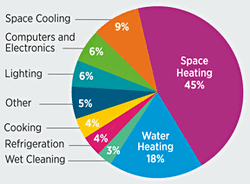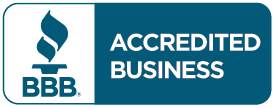Heating and Cooling Costs
Heating and cooling costs represent 54%* of your household energy consumption and the cost of utilities increases 3% to 5% each year. The efficiencies of new systems are improving regularly.
(See SEER ratings at “Efficiencies” ).
Efficiencies drop 5% to 10% each year for unserviced systems.
That is why you should keep your systems serviced and up to date.
* Data from version 8 of Manual J from ACCA.”SEER” of Air Conditioning Condensers
“SEER” (Seasonal Energy Efficiency Ratio) is a measurement of efficiency for AC condensers. It is simply the ratio between the OUTPUT of the unit (BTU per hour) and the energy INPUT of the unit (Kilowatt hours) and is defined simply as BTU/hr(output) divided by KWH (input). A simple analogy using an automobile is Miles per Gallon. We all know that we prefer a lot of miles for every gallon of gasoline used. Similarly, we prefer a lot of BTU’s cooling for every KWH of electricity used.
SOME THINGS TO KNOW:
1. Each “TON” of air conditioning produced by a unit = 12000 BTU/ hr. Thus a “3-TON” unit produces 36,000 BTU/hr, etc.
2. The cost of electricity from Alabama Power in central Alabama is approximately 7 cents per KWH, or 7 cents per 1000 watts per hour. That is BEFORE taxes. With taxes, the cost is approximately 12.6 cents per KWH.*
3. A home air conditioner in central Alabama runs approximately 1557 hours per year, over a period of approximately 5 months.
4. SEER ratings are established by the U.S. government. SEER ratings since 2006 are 13, 14, 15, 16, 17, 18, 19, and 20. The minimum allowable SEER for a new system is 14 SEER.
5. Prior to 2006, 10 SEER was the standard for systems produced since about 1987. 10 SEER units operate with R22 refrigerant which is being phased out. Consequently, service on systems that are older than 2006 is rapidly becoming more expensive and soon will be unavailable.



